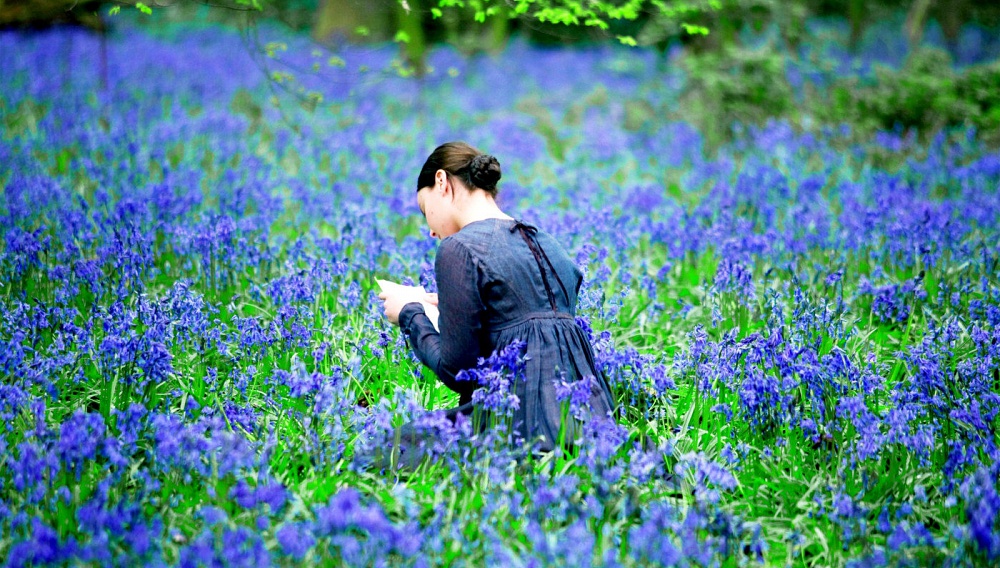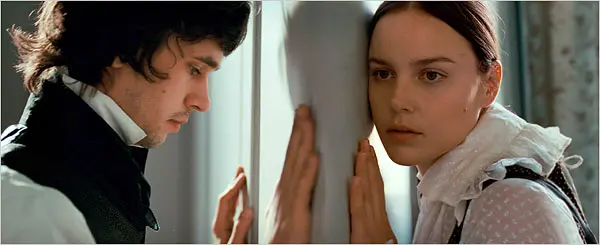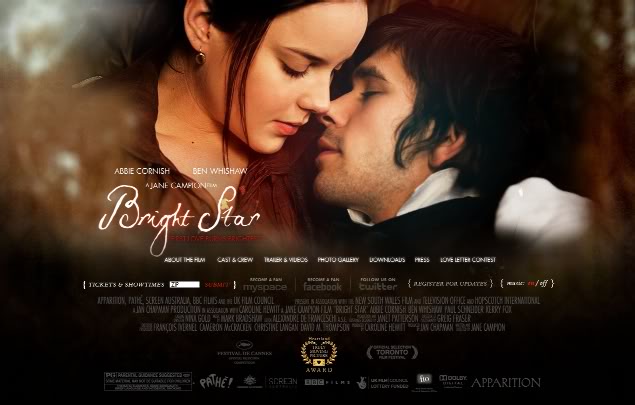By Angeliki Georgakopoulou,
Bright Star, produced in 2009, is a postmodern biopic written and directed by Jane Campion. It is centered on the life and work of Romantic poet John Keats, as well as his romantic relationship with Fanny Brawne. Through a feminist lens, Campion reframes the image of Keats and his love for Fanny, thus shedding light on the ideas of art and the human condition. Hence, through an evaluative examination of the intertextual relationship between Keats’s poetic collection and the film, audiences observe and appreciate the multiplicity of ideas that spring from universal certainties.
Campion’s feminist revision mirrors the Keatsian notions of the imagination and synesthesia through the visual and aural resonances and dissonances in order to create a film synonymous with the concept of artistry. The long shot of Keats in nature writing poetry and the mise en scene reflecting nature as a backdrop with the change of seasons is a testament to Campion’s artistry and resonance with his poems. The epigraphic allusion to “Ode to a Nightingale” (1819) through voiceover, as Keats recites “My heart aches… as though of hemlock I had drunk”, acts as a narrative device that portrays Keats’s concept of negative capability and the imagination as a faculty of spiritual and creative understanding. Such an aesthetic reflection of Romanticism and valedictory salute to nature is mirrored in the film through artful montages of the seasons. Parallel to this, the diegetic bird sounds incorporated in the long shots of the Brawne family and Keats dancing in the woods, echo the sounds of “To Autumn” (1820) and create a revering atmosphere, which assaults the senses of the responder and aligns with the aestheticism of Keats’ euphonic poetry. Thus, Campion’s biopic utilizes art as a conduit into the timelessness and versatility of imagination and personal expression.

Furthermore, Campion follows the artist in changing contexts, hence providing greater insight into the personas of Keats and Fanny as artists. In the film Bright Star, Campion reframes Keats’ poetic innovation by appealing to a higher sense of truth regarding Keats the poet, and the man, through the linear narrative structure. This is manifested through the cut to the soirée and the introduction of dialogue “Someone submitted to the examiner… tenth muse”, which authentically captures the Romantic idealism of Keats’ social and artistic milieu and resonates with Keats’ poetic artistry. Hence, through the textual conversation, Campion’s lyrical art film sparks new interest in a modern responder for Keats the man and his poetry by providing a holistic portrait of Keats as a visionary.
Moreover, in Campion’s film, the close-up shot of Fanny stitching a frilly collar contributes to the gendered connotations and aligns with Keats’ love of Shakespeare. However, this creates a jarring quality within the film, as Fanny encompasses the binary opposite qualities of outspokenness and sewing, as a contextually feminine art form. Therefore, by sharing and challenging common notions regarding the artist, Campion renders greater acumen into the significance of the imagination, whilst simultaneously making traditional texts valuable to a modern audience.

Finally, Campion’s historical costume romance film engages in this provocative discussion with Keats’ poetic oeuvre to foreground the universally accepted ideal of love as a “bright star”. The recitation of Bright Star is appropriately chosen by Campion to reflect on Keats’ longing to be held eternally in a “sweet unrest”. This is an accurate resonance and critique of Keats’ Shakespearean sonnet, as it becomes a cinematic translation of the power of love, hence increasing the artistic aura of the film and suspending disbelief. On the other hand, Campion, composing her film in a postmodern feminist era, has reframed features of Keats’ opus to appeal to a postmodern audience. The alternating shots of Keats and Fanny resting their hands and foreheads on the same point on opposite sides of the wall, collide with Keats’ poetry and symbolize the social restrictions orbiting their idealized love. Consequently, audiences see how personal agenda permeates texts and allows composers to reimagine society by exchanging ideas.
In conclusion, the close study of Campion’s Bright Star brings attention to the reframing of Keatsian notions for the purpose of providing an insight into prevailing contextual issues and concerns, including art and love. Also, this process facilitates a new appreciation and understanding of the canonical text through the lens of feminism and postmodernism which resonate with a modern audience.
References




